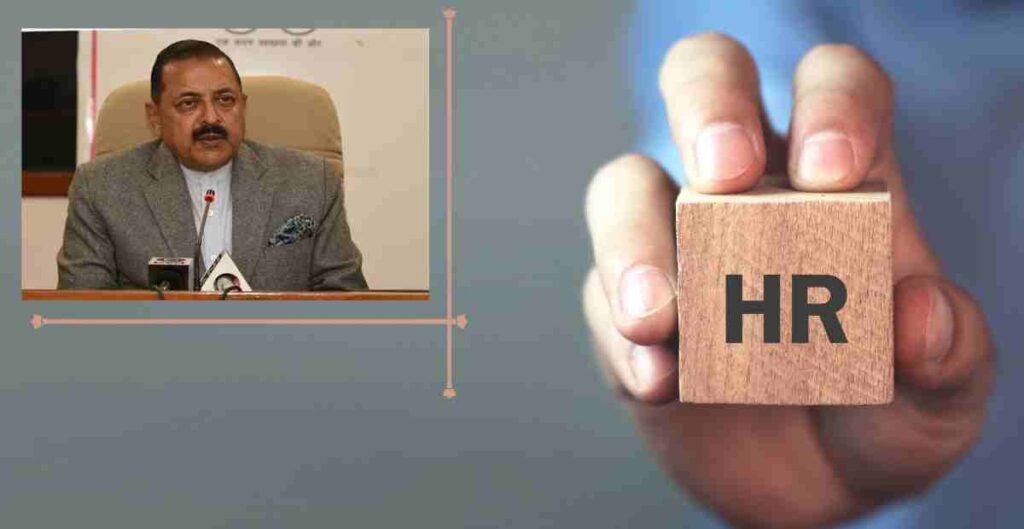As the Union Minister of State for Personnel, Public Grievances and Pensions, Jitendra Singh has been a strong advocate for building a robust human resources foundation for the government. In this article, we will explore his vision for the Department of Personnel and Training (DoPT) and the importance of human capital management (HCM) in government organizations.
Introduction to Jitendra Singh’s vision for DoPT
Jitendra Singh’s vision for DoPT is centered around creating a workforce that is skilled, diverse, and adaptable. He believes that building a strong human resources foundation is essential for the government to achieve its goals and deliver quality services to citizens. The DoPT has implemented several initiatives to achieve this vision, including capacity building programs, recruitment reforms, and training and development courses.
Understanding human capital management (HCM)
Human capital management (HCM) is the strategic approach to managing an organization’s workforce. It involves recruiting, developing, and retaining employees to achieve the organization’s goals. HCM focuses on leveraging human capital as a valuable asset and investing in employee development to create a high-performing organization.
The importance of HCM in government organizations
HCM is especially crucial in government organizations because they are responsible for delivering essential services to citizens. A skilled and motivated workforce is essential for ensuring the efficient and effective delivery of these services. HCM can also help government organizations address challenges such as skills shortages, diversity, and employee retention.
Components of a human capital management system
A human capital management system includes several components, such as recruitment and selection, performance management, learning and development, and succession planning. These components work together to ensure that the organization has a skilled and motivated workforce that is aligned with its strategic goals.
The role of human capital managers in HCM
Human capital managers play a vital role in implementing HCM in government organizations. They are responsible for designing and implementing policies and programs that attract, develop, and retain a skilled workforce. Human capital managers also play a critical role in identifying and addressing workforce challenges.
Understanding human resource management (HRM)
Human resource management (HRM) is the operational function of managing an organization’s workforce. It involves tasks such as recruitment, payroll, benefits administration, and employee relations. While HRM is an essential function, it is not synonymous with HCM.
Differences between HCM and HRM
While HCM and HRM are related, they have distinct differences. HCM is a strategic approach to managing human capital, while HRM is an operational function. HCM focuses on developing a skilled and motivated workforce aligned with the organization’s strategic goals, while HRM focuses on administrative tasks such as payroll and benefits administration.
HRM services in government organizations
HRM services in government organizations include recruitment and selection, payroll administration, benefits administration, and employee relations. These services are essential for ensuring that the organization has a skilled and motivated workforce that is aligned with its strategic goals.
Human resource management processes in public service
Human resource management processes in public service are similar to those in other organizations. Still, they are subject to additional regulations and requirements. For example, public service organizations must comply with civil service laws and regulations, which can impact recruitment and selection processes.
The division of human resources in government organizations
Human resources in government organizations are often divided into functional areas such as recruitment, training and development, and employee relations. This division allows for specialized expertise in each area and helps ensure that the organization has a skilled and motivated workforce.
Progressive organizations’ view of human resources
Progressive organizations view human resources as a strategic asset and invest in employee development and well- being. They understand that a skilled and motivated workforce is essential for achieving organizational goals and delivering quality services to customers.
Conclusion: Implementing Jitendra Singh’s vision for DoPT
Implementing Jitendra Singh’s vision for DoPT requires a concerted effort from all stakeholders. It involves creating a culture that values and invests in human capital, developing policies and programs that attract and retain a skilled workforce, and providing training and development opportunities to employees. By prioritizing HCM, government organizations can achieve their goals and deliver quality services to citizens.
To learn more about human capital management and how it can benefit your organization, visit https://yunicsolutions.com/.

